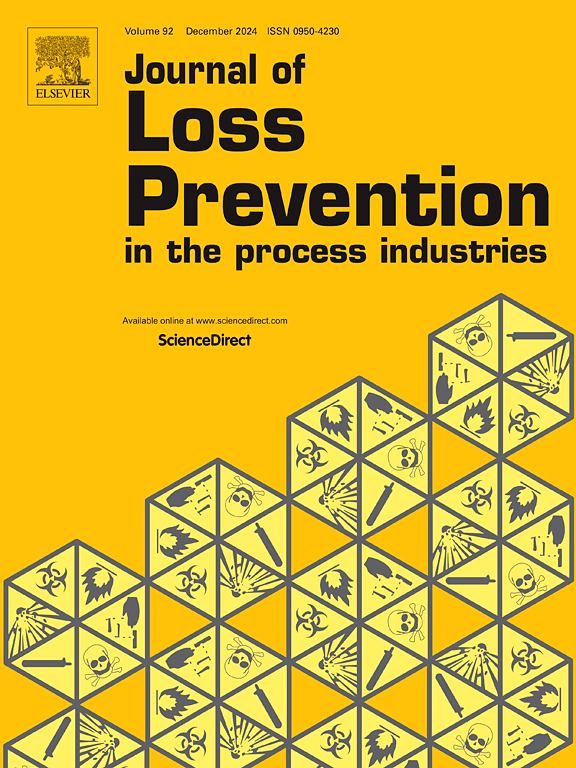水路易燃液体运输风险评估:本体驱动的动态贝叶斯网络方法
IF 3.6
3区 工程技术
Q2 ENGINEERING, CHEMICAL
Journal of Loss Prevention in The Process Industries
Pub Date : 2024-11-22
DOI:10.1016/j.jlp.2024.105504
引用次数: 0
摘要
涉及水路易燃液体运输的事故往往会导致严重后果,这凸显了在不确定条件下进行有效风险评估的重要性。本文介绍了一种新型方法,用于评估与水路易燃液体运输时空演变相关的风险。通过利用本体模型和动态贝叶斯网络,该方法涉及分析影响风险的因素、构建标准化知识表示模型,以及将其映射到动态贝叶斯网络以进行综合风险评估。该方法结合了模糊理论和最佳-最差法,在贝叶斯框架内计算概率,从而能够详细分析各种因素对运输风险的影响。通过开发长江辛烷运输动态风险评估模型,展示了该模型在不同条件下预测风险的能力,并对实际应用进行了说明。本体驱动的贝叶斯网络模型为易燃液体运输的明智管理决策奠定了坚实的基础,有效地解决了语义表达和不确定性下的推理难题,从而提高了水路运输的安全性。本文章由计算机程序翻译,如有差异,请以英文原文为准。
Risk assessment of flammable liquid transportation on waterways: An ontology-driven dynamic Bayesian network approach
Accidents involving the transportation of flammable liquids on waterways often lead to severe consequences, highlighting the importance of effective risk assessment under conditions of uncertainty. This paper presents a novel methodology for evaluating the risk associated with the spatiotemporal evolution of flammable liquid transportation on waterways. By leveraging ontology models and dynamic Bayesian networks, the approach involves analyzing factors that impact risk, constructing a standardized knowledge representation model, and mapping this onto a dynamic Bayesian network for comprehensive risk assessment. The methodology incorporates fuzzy theory and the Best-Worst Method to calculate probabilities within the Bayesian framework, enabling detailed analysis of factor impacts on transportation risk. A practical application is illustrated through the development of a dynamic risk evaluation model for octane transportation in the Yangtze River, demonstrating the model's capability to predict risk under varying conditions. This ontology-driven Bayesian network model provides a robust foundation for making informed management decisions in the transportation of flammable liquids, effectively addressing the challenges of semantic expression and inferencing under uncertainty to enhance safety in waterway transportation.
求助全文
通过发布文献求助,成功后即可免费获取论文全文。
去求助
来源期刊
CiteScore
7.20
自引率
14.30%
发文量
226
审稿时长
52 days
期刊介绍:
The broad scope of the journal is process safety. Process safety is defined as the prevention and mitigation of process-related injuries and damage arising from process incidents involving fire, explosion and toxic release. Such undesired events occur in the process industries during the use, storage, manufacture, handling, and transportation of highly hazardous chemicals.

 求助内容:
求助内容: 应助结果提醒方式:
应助结果提醒方式:


